
PREV ARTICLE
NEXT ARTICLE
FULL ISSUE
PREV FULL ISSUE
INDIAN HALF EAGLE PROOF FINISHESHeritage will be selling an interesting pair of $5 Indian Proofs, offering an opportunity to review two different finishes once produced by the U.S. Mint. Here's the press release. -Editor 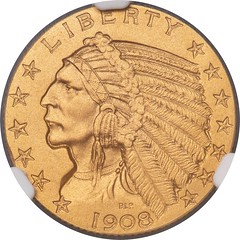 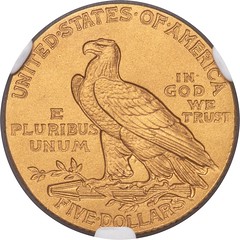
Half Eagle Proofs Prove To Be Desirable Today Heritage Auctions will be offering a gorgeous pair of $5 Indian Proofs, or special strikes made for collectors, at the US Coins Signature Auction, which has been moved from Long Beach to Heritage Auctions' global headquarters in Dallas, June 4-7, due to the cancellation of the Long Beach Expo. Not only are these coins rare in their own right--a small handful of pieces were produced--but they are also a wonderful opportunity to compare the different proof finishes that the US Mint was testing out during this experimental period in coinage history. Take a look at both sets of images to see the differences between these two pieces. The 1908 $5 Proof, graded NGC Proof 67, is an example of the sandblast finish that has a somewhat grainy texture and a unique color and "look" that would stand out even to the non-numismatist. The 1909 $5 Proof, graded NGC Proof 66+, has a satin proof finish. These coins from the first two years of Bela Lyon Pratt's new Indian Head design, which had the unique characteristic of being recessed with sunken relief. These coins are popular with collectors today, but opinions at the time were mixed. As Heritage Auctions' catalogers explain about the 1908: "Although the sandblast finish is admired today, contemporary collectors were initially turned off by it, having expected the coins to be issued with the usual mirrored fields finish of years prior. A fairly substantial mintage of 167 proof 1908 Indian fives was produced, but the following year production plummeted, reflecting collector sentiment about the sandblast finish. Many of the 1908 proofs were poorly stored by their owners, resulting in a limited supply of high-grade pieces today." 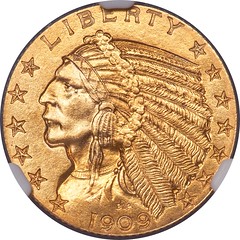 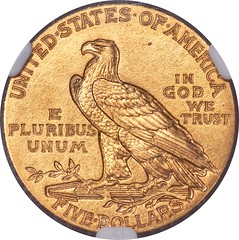
About the 1909: "The satin style seen here was used in 1909 and 1910 in an attempt to appease the public, but it proved to be only marginally more appealing. Production dipped from 236 proofs in 1908 to 139 proofs in 1909, of which 78 specimens were sold. The rest were unceremoniously melted. Although these satin proofs are far more popular and widely sought-after today, only 50 to 60 pieces are believed extant." Fine Art enthusiasts are likely familiar with Bela Lyon Pratt due to his fame as an artist and sculptor before he was ever a coin designer. He was a student of artist William Merritt Chase (whose paintings have sold at Heritage) and the famed Augustus St. Gaudens (who is known for both his fine art and his coin designs). There would be some crossover appeal to the American Art category as well as to Yale alumni. Mr. Pratt attended Yale, as did his father, and today their numismatic museum is named after him: The Bela Lyon Pratt Study Room for Numismatics. Similar coins to these two examples have sold in the $50,000 to $100,000 range, so these are rare pieces that should bring strong bidding in the June Long Beach sale #1316. Check them out and compare the two pieces here:
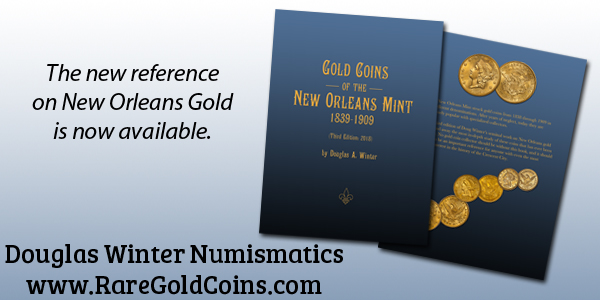 Wayne Homren, Editor The Numismatic Bibliomania Society is a non-profit organization promoting numismatic literature. See our web site at coinbooks.org. To submit items for publication in The E-Sylum, write to the Editor at this address: whomren@gmail.com To subscribe go to: https://my.binhost.com/lists/listinfo/esylum All Rights Reserved. NBS Home Page Contact the NBS webmaster 
|